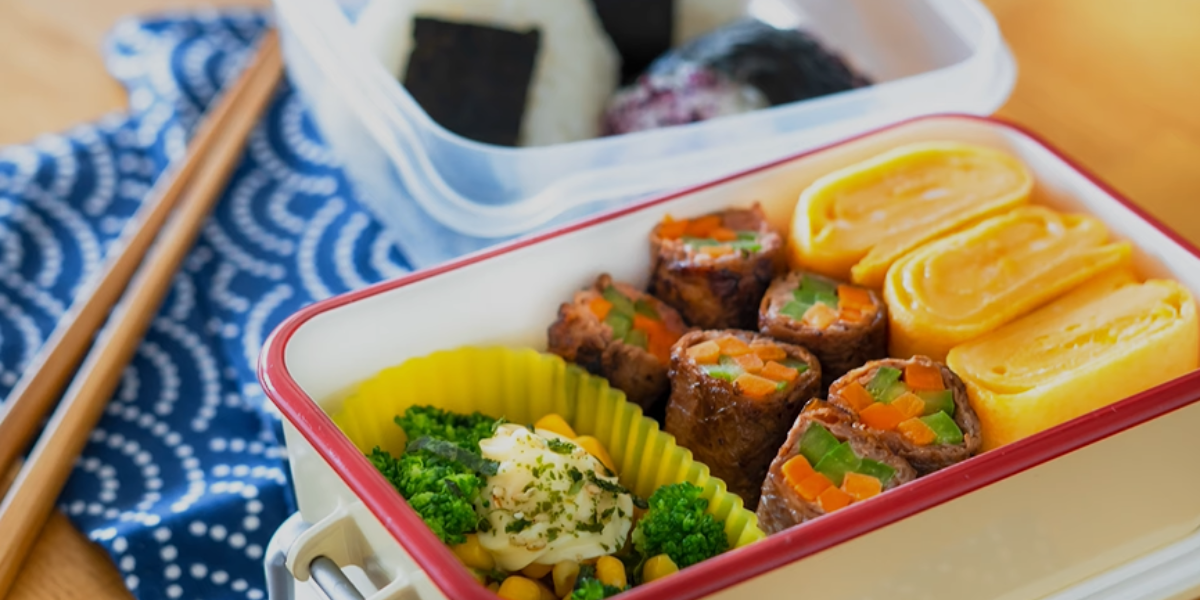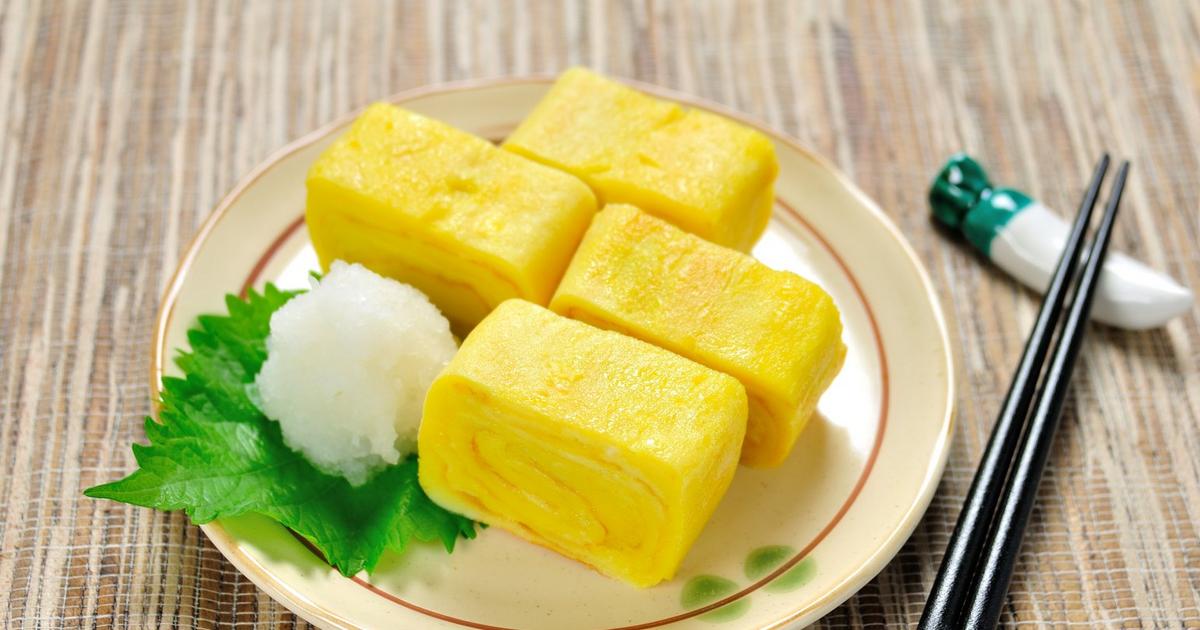Nestled within the vibrant tapestry of Japanese cuisine lies a culinary gem that captivates both the eye and the palate – Tamagoyaki. This beloved dish, often referred to as a Japanese rolled omelette, is a testament to the country’s culinary finesse and cultural heritage. Let’s embark on a journey to unravel the secrets behind the allure of Tamagoyaki.
Origins and History:
Tamagoyaki traces its roots back to the Edo period (1603-1868) in Japan when it was first crafted as a humble street food. Initially, Tamagoyaki consisted of simple ingredients such as eggs, sugar, and soy sauce, cooked over an open flame. Over time, it evolved into a popular dish enjoyed both at home and in restaurants, with variations emerging to suit different tastes and occasions.
Ingredients and Preparation:
The core ingredients of Tamagoyaki are eggs, dashi (Japanese soup stock), sugar, and soy sauce, although additional ingredients such as mirin (sweet rice wine), salt, and even grated yam can be incorporated for added flavor and texture. The key to mastering Tamagoyaki lies in the technique of layering and rolling the eggs to achieve a light, fluffy texture with a beautifully uniform shape.
To prepare Tamagoyaki, a rectangular Tamagoyaki pan called a makiyakinabe is traditionally used. The pan is greased with oil or butter, and a thin layer of beaten egg mixture is poured in, allowing it to cook briefly before rolling it up from one end. This process is repeated, layer upon layer, until a delicate, multi-layered omelette is formed. The result is a visually stunning dish that tantalizes the taste buds with its sweet and savory flavor profile.
Varieties and Adaptations:
While the classic Tamagoyaki remains a timeless favorite, there are numerous variations and adaptations that cater to diverse tastes and dietary preferences. Some variations include adding ingredients such as shrimp, crab, vegetables, or even cheese to the egg mixture for added flavor and texture. Additionally, Tamagoyaki can be served as a standalone dish, incorporated into sushi rolls, or sliced and served as a topping for rice or noodles.
Cultural Significance:
Beyond its culinary appeal, Tamagoyaki holds a special place in Japanese culture, symbolizing warmth, comfort, and hospitality. It is often served as part of a traditional Japanese breakfast or as a side dish in bento boxes. In addition to its delicious flavor, the intricate layers and vibrant colors of Tamagoyaki make it a feast for the eyes, reflecting Japan’s dedication to aesthetics and attention to detail.
Simple recipe for making Tamagoyaki at home:
Ingredients:
- 4 large eggs
- 2 tablespoons dashi (Japanese soup stock) or water
- 1 tablespoon soy sauce
- 1 tablespoon mirin (Japanese sweet rice wine)
- 1 teaspoon sugar
- 1 tablespoon neutral-flavored oil (such as vegetable or canola oil)
- Optional: chopped scallions, cooked shrimp, vegetables, or any other fillings of your choice
Instructions:
- In a mixing bowl, crack the eggs and add the dashi, soy sauce, mirin, and sugar. Whisk the mixture until well combined and frothy.
- If you’re adding any fillings such as scallions, shrimp, or vegetables, stir them into the egg mixture.
- Heat a Tamagoyaki pan or a small non-stick skillet over medium heat. Brush the pan with a thin layer of oil to prevent sticking.
- Pour a thin layer of the egg mixture into the pan, just enough to cover the bottom. Allow it to cook for a minute or until the edges start to set.
- Using chopsticks or a spatula, gently roll the cooked egg from one end of the pan to the other, creating a thin layer. Push the rolled egg to one side of the pan.
- Brush the empty side of the pan with more oil, then pour another thin layer of the egg mixture into the pan, making sure to lift the rolled egg slightly to let the new layer flow underneath.
- Once the new layer has set slightly, roll it up from the end opposite to the rolled egg, pushing it towards the rolled egg to create a compact roll.
- Repeat steps 6 and 7 until all of the egg mixture is used, rolling the egg into a neat cylinder with each layer.
- Once the Tamagoyaki is cooked through and has a golden-brown color on the outside, remove it from the pan and let it cool slightly.
- Transfer the Tamagoyaki to a cutting board and slice it into bite-sized pieces. Serve warm or at room temperature as a delicious snack or side dish.
Interesting facts about Tamagoyaki:
- Traditional Japanese Dish: Tamagoyaki, also known as Japanese rolled omelette or sweet egg roll, is a traditional Japanese dish enjoyed as part of breakfast, bento boxes, or as a side dish.
- Edo Period Origins: Tamagoyaki has a long history dating back to the Edo period (1603-1868) in Japan. It was originally crafted as a simple street food made from eggs, sugar, and soy sauce cooked over an open flame.
- Art of Layering and Rolling: The distinctive feature of Tamagoyaki is its multi-layered and rolled structure. To achieve this, thin layers of beaten egg mixture are cooked and rolled one over the other to create a delicate and visually appealing omelette.
- Sweet and Savory Flavor: Tamagoyaki is characterized by its sweet and savory flavor profile, thanks to the combination of ingredients such as eggs, sugar, soy sauce, and sometimes mirin (sweet rice wine). The sweetness balances the umami flavor of the soy sauce, creating a harmonious taste experience.
- Versatile Dish: While the classic Tamagoyaki consists of eggs, sugar, and soy sauce, there are numerous variations and adaptations that incorporate additional ingredients such as shrimp, crab, vegetables, cheese, or even mentaiko (spicy cod roe). These variations add texture and flavor diversity to the dish.
- Cultural Significance: Tamagoyaki holds cultural significance in Japan and is often associated with warmth, comfort, and hospitality. It is commonly served as part of a traditional Japanese breakfast, symbolizing the start of a new day and providing nourishment for the day ahead.
- Skill and Technique: Mastering the art of making Tamagoyaki requires skill and technique, particularly in the process of layering and rolling the egg mixture. Chefs often take pride in their ability to create perfectly uniform and tightly rolled Tamagoyaki with beautifully defined layers.
- Popular Street Food and Snack: In addition to being enjoyed at home and in restaurants, Tamagoyaki is also a popular street food and snack in Japan. It can be found in food stalls and markets, where it is served fresh and warm, ready to be eaten on the go.
- Symbol of Celebration: Tamagoyaki is sometimes served during special occasions and celebrations in Japan, such as New Year’s Day, weddings, and other festive events. Its vibrant colors and festive appearance make it a fitting dish for joyous occasions.
- Global Appeal: Tamagoyaki has gained popularity beyond Japan and can be found in Japanese restaurants worldwide. Its delicious flavor, unique texture, and aesthetic appeal have captivated food enthusiasts around the globe, making it a beloved dish in international cuisine.
(FAQs) about Tamagoyaki:
Q. What is Tamagoyaki?
- Japanese rolled omelette, sweet egg roll, and tamagoyaki are all terms for the same traditional Japanese dish: a cylindrical form formed by rolling thin layers of seasoned beaten eggs.
Q. What does Tamagoyaki taste like?
- The flavor profile of tamagoyaki is a combination of sweet and savory notes. It has a delicate egg texture and a subtle umami flavor from ingredients like mirin and soy sauce. The dish’s sweetness complements the savory flavors, resulting in a balanced and enjoyable eating experience.
Q. What are the main ingredients in Tamagoyaki?
- The primary components of tamagoyaki are dashi (Japanese soup stock), sugar, soy sauce, and eggs. To elevate the taste, you can also add mirin, which is sweet rice wine.
Q. How is Tamagoyaki cooked?
- Over medium heat, fry the tamagoyaki in a rectangular pan or a small nonstick skillet. To make a thin layer, pour a thin layer of beaten egg mixture into the pan, cook it for a few seconds, and then wrap it up starting at one end. A cylindrical omelette is made by repeating this method layer after layer.
Q. Can I add fillings to Tamagoyaki?
- To make tamagoyaki even more versatile, you may top it with chopped scallions, cooked shrimp or crab, veggies, cheese, or any number of other ingredients. The fillings enhance the dish’s flavor, texture, and presentation.
Q. Is Tamagoyaki gluten-free?
- You can eat traditional tamagoyaki without gluten because it only contains eggs, sugar, soy sauce, and dashi. The recipe might not be gluten-free, though, if gluten-containing mirin or soy sauce are used. To be sure there are no allergens, read the ingredients carefully.
Q. Is Tamagoyaki served hot or cold?
- It all comes down to personal preference and the event: hot, warm, or cold tamagoyaki. Traditional Japanese breakfasts and bento boxes often include it warm, but it also tastes great cold or at room temperature as a snack or side dish.
Q. Can I make Tamagoyaki ahead of time?
- If you want to make Tamagoyaki in advance, you can do so and save it in the fridge for later. Either warm it gently in a skillet or microwave before serving, or eat it cold for a quick and tasty snack.
Q. Is Tamagoyaki vegetarian-friendly?
- If you want to make tamagoyaki suitable for vegetarians, you can leave out the fish flakes that are typically used to make dashi. To make it vegetarian-friendly, you can replace the soup stock with water or vegetarian dashi and add veggies or tofu instead.
Q. Can I freeze Tamagoyaki?
- The answer is yes, you can freeze tamagoyaki for later. After it’s cooled entirely, cover it firmly with plastic wrap or foil and store it in a freezer bag or airtight container. Defrost it in the fridge the night before and then warm it gently in a pan or microwave until heated through.
Conclusion:
Tamagoyaki is a culinary masterpiece that showcases Japan’s rich cultural heritage and culinary excellence in a world where delicious food abounds. Since its humble beginnings as a street meal, Tamagoyaki has grown into a cherished treat that delights palates worldwide. The next time you’re in the mood for something authentically Japanese, why not treat yourself to a slice of tamagoyaki?


:max_bytes(150000):strip_icc()/__opt__aboutcom__coeus__resources__content_migration__serious_eats__seriouseats.com__2019__08__20190611-tamagoyaki-vicky-wasik-4-955f4e9a6c8249358ee8f9e975edd8fc.jpg)

